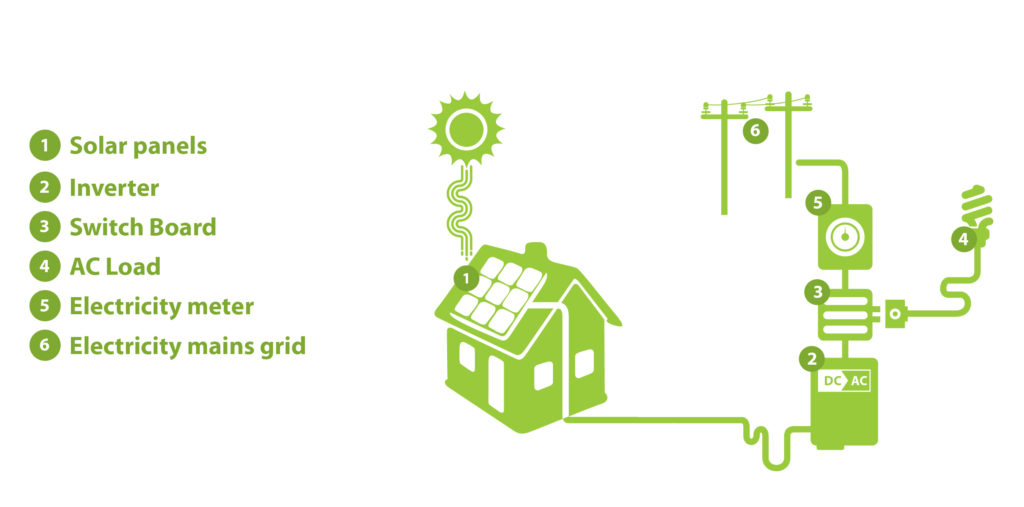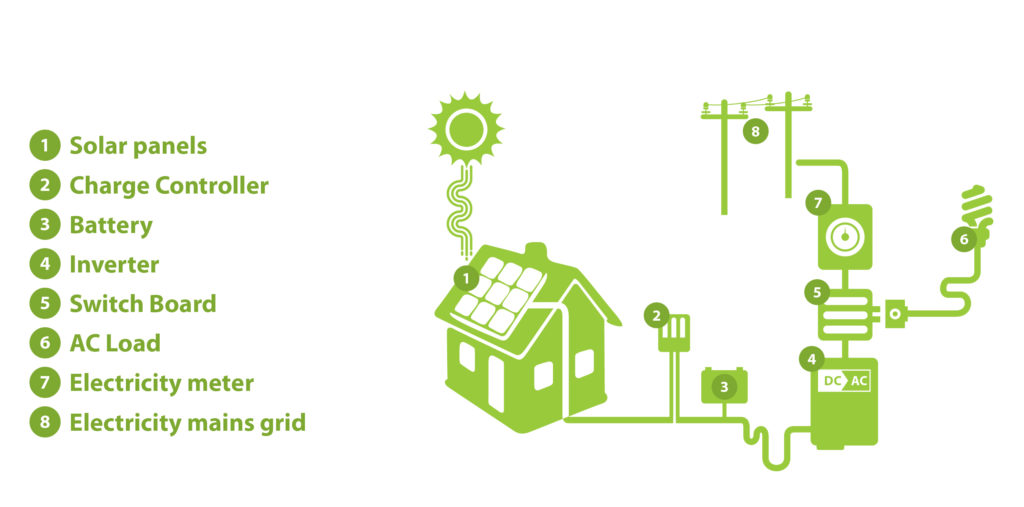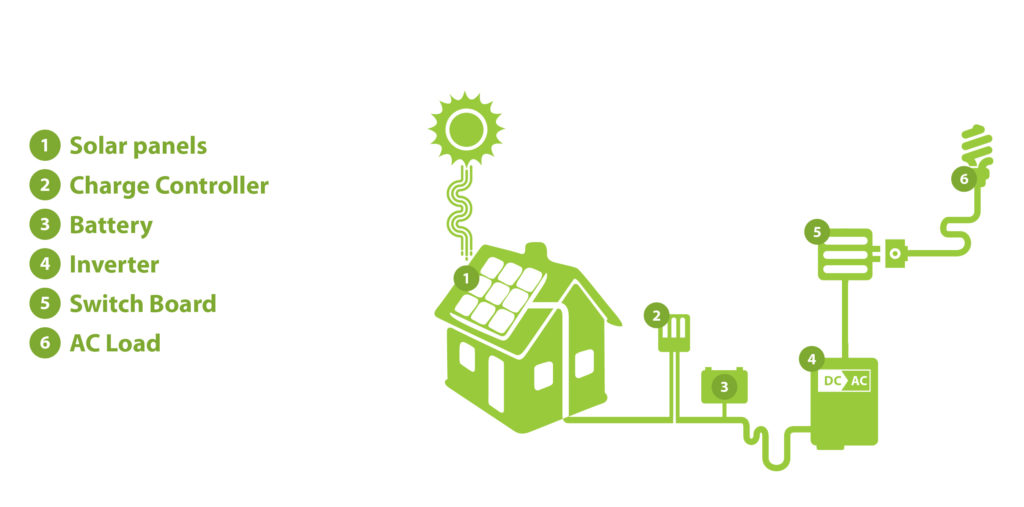Solar electric overview
Photovoltaic (PV) devices generate electricity directly from sunlight via an electronic process that occurs naturally in certain types of material, called semiconductors. Electrons in these materials are freed by solar energy and can be induced to travel through an electrical circuit, powering electrical devices or sending electricity to the grid.
PV devices can be used to power anything from small electronics such as calculators and road signs up to homes and large commercial businesses.
There are three main types of solar electric power systems: grid tied; grid inter-tied with battery backup; and off-grid. These three broad types vary in how closely connected they are to the traditional power utility infrastructure, known as the grid. Each type has strengths that determine how suited they are to your needs.


